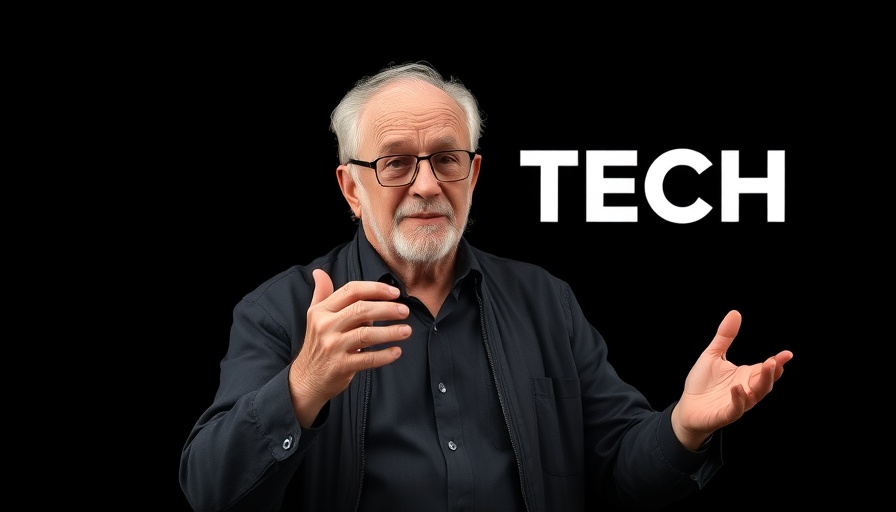
Revolutionizing AI: Understanding Apple’s Fast VLM
Apple's recent unveiling of Fast VLM (Vision Language Model) presents a groundbreaking advancement in artificial intelligence technology. As the company claims, this model operates at speeds up to an astounding 85 times faster than previous iterations. Built to function seamlessly even on a MacBook Pro, Fast VLM represents a transformative leap in AI capabilities, particularly at the intersection of visual and text understanding.
In Apple’s New AI SHOCKS The Industry With 85X More Speed, the discussion dives into revolutionary innovations in AI, exploring key insights that sparked deeper analysis on our end.
The Significance of Vision Language Models in AI
What makes Fast VLM particularly significant is its classification as a Vision Language Model. These models empower AI systems to interpret, integrate, and respond to both textual and visual data simultaneously. For instance, instead of merely generating an essay from a prompt, a user can input a chart or diagram, and the model will process and respond to this visual information contextually. Such capability is a game-changer not only for AI deployment across various sectors but also for enhancing user interaction.
Trusting Resolution and Efficiency
However, resolution remains a pivotal factor in the performance of any model. Low-resolution inputs can lead to loss of critical details, while high-resolution processing often overwhelms existing frameworks due to excessive data output. This creates what's known in the industry as the Time to First Token (TTFT) — a latency metric crucial for assessing user experience. Apple's relentless focus on minimizing TTFT through Fast VLM could very well redefine expectations for speed and efficiency in AI processing.
Architectural Innovations: The Heart of Fast VLM
At the core of Fast VLM lies Fast Vit HD, a hybrid vision encoder that strategically incorporates both convolutional and transformer layers. This innovative architecture allows for quick and effective compression of visual data. The convolutional layers efficiently extract local details, while the transformer layers ensure the model understands the broader context of information organization. Apple's decision to incorporate an additional downsampling layer has resulted in an architecture that consistently produces fewer tokens without compromising on detail, translating to enhanced operational speed.
Benchmarks and Performance Metrics
The performance of Fast VLM is staggering when positioned against its predecessors and current market leaders. In comparative tests, Apple’s model showcases an up to 3.22 times improvement in TTFT over previous models while significantly reducing token output. It meets or exceeds benchmarks across various tests, illuminating its potential utility across text-heavy tasks such as document analysis and optical character recognition (OCR). All this has been accomplished without needing the gargantuan compute demands typically associated with training large models, indicating an efficient scalability.
The Future of AI on Personal Devices
What stands out about Fast VLM is its accessibility; Apple successfully calibrated this advanced model to run effectively on consumer-grade hardware like the MacBook Pro, contrasting with commonly employed server-based infrastructures. This accessibility hints at a future where advanced AI could assist personal and professional endeavors without reliance on heavy computational resources — a vision that could democratize AI technology.
Economic Implications of AI Evolution
As the Fast VLM model establishes itself as a standard-bearer for future developments, the broader economic ramifications are palpable. Organizations that swiftly adopt and integrate this technology stand to gain considerable advantages, potentially shifting job landscapes and redefining roles within various sectors. With changes coming at breakneck speed, stakeholders must weigh their options carefully to seize newfound opportunities, lest they fall behind.
Facilitating such a transition calls for embracing evolution rather than resisting it. Adapting to these advancements can yield significant benefits; for example, utilizing the Faceless Empire concept — a methodology generating substantial passive income without the stress of personal branding — stands as a prime example of capitalizing on AI’s potential. Understanding and integrating these tools can directly boost financial, operational, and innovative potential.
A Call to Arms in the AI Revolution
In conclusion, Fast VLM is not merely an upgrade but a transformational leap that redefines the standards by which AI should function. As we gather to navigate this new landscape, those who are proactive and informed will find themselves taking advantage of opportunities that could lead to substantial economic gains or enhanced productivity.
If you wish to be part of this evolution and explore the possibilities it offers, don't delay your chance to sign up for updates on the Faceless Empire. Opportunities like these could set the stage for remarkable achievements in AI-driven landscapes.
 Add Row
Add Row  Add
Add 




Write A Comment